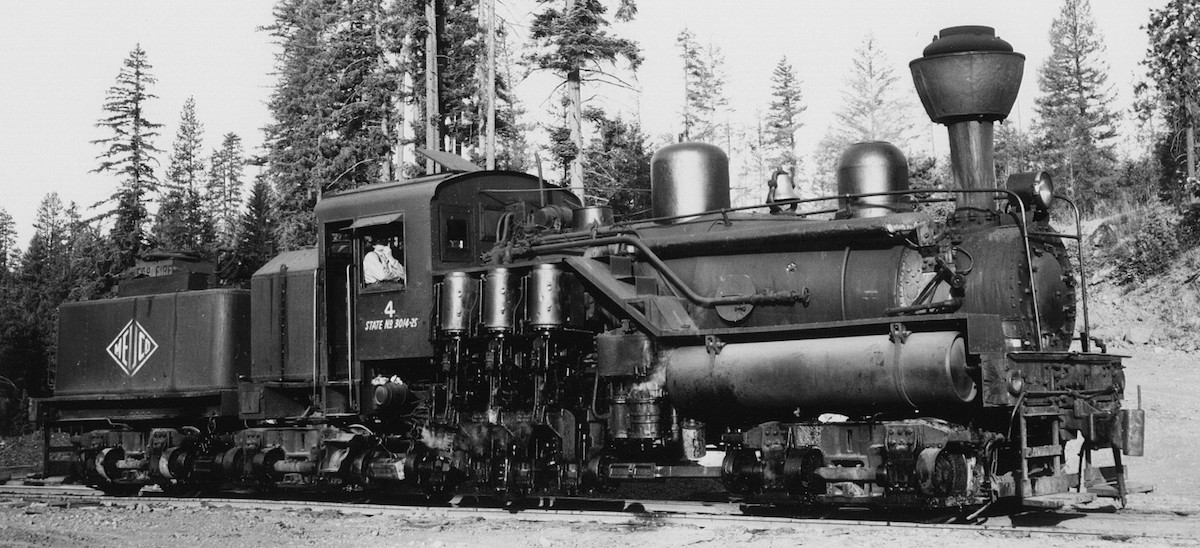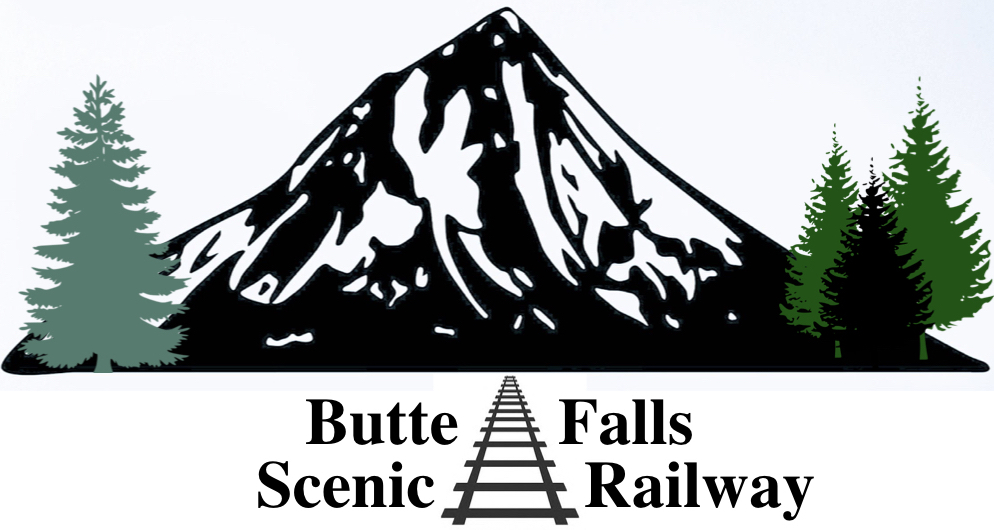
To return to the EQUIPMENT page click on EQUIPMENT above
Chicago , Burlington and Quincy Caboose #14446
Text and photos by Tony Johnson unless otherwise noted
This red caboose is the second oldest piece of railroad rolling stock in our Chapter's collection. The Chicago, Burlington & Quincy Railroad built this NE-6 class caboose at their Aurora, Illinois, shops in June of 1910.
This car, an NE6 class caboose, represents the 30-foot, four-window prototype caboose that the CB&Q owned and operated from the 1904 consolidation until the 1970 merger. The CB&Q was very frugal and was an early “recycler” of equipment. Any of these cabooses received at least one, if not two rebuilds during their lifetime. Sometime in the 1930's, the wooden end ladders were replaced with steel, wooden end beams were replaced with steel and the wooden cupola side and ends were replaced with zinc sheeting. Our caboose still retained the wooden end beams.
The 80 cabooses of the NE6 class were all built at Aurora between June of 1910 and September of 1911. When built, all of the NE6 class were painted Q's standard mineral red; in later years some received the Chinese Red paint, still later some were painted in green paint scheme. Seventy of the eighty cars were standard cabooses, while the remaining ten were built as drover caboose. The seventy standard cars were numbered from 14407 through 14476.
At the time of the BN merger only seventeen out of the original seventy standard cabooses were in existence and they were being used in yard and way freight service only. In the 1970 merger that created the Burlington Northern Railroad, CB&Q caboose #14446 was transferred to the Burlington Northern under the assigned number BN 11125, but it never was painted as such. By the end of 1977 all remaining members of this class were retired or scrapped.
In June 1975 CB&Q #14446 was sold to the Oregon Pacific & Eastern Railway (OP&E) of Cottage Grove, Oregon. The OP&E was a logging railroad between Cottage Grove and Culp Creek , Oregon that also ran excursion passenger trains.
Many years before the OP&E closed down for good in 1995, this caboose was sold again to become a part of the Station House Restaurant in Medford . The Station House was located on Jacksonville Highway next to Bi-Mart (where KBOY Radio was located). The restaurant cut in an entrance doorway into the side of the caboose and made it their lounge.
When the restaurant closed it was then purchased by Ed Krahel of Ashland . After his death the Krahel property was purchased at auction by Ted Clay of Ashland in 1994, who donated the caboose and three other railroad cars to the Southern Oregon Chapter of the National Railway Historical Society.
1995 - The Move To Medford This caboose, along with the Southern Pacific flatcar next to it, a Southern Pacific boxcar and the wooden Burlington Northern caboose #11205 were all moved by low-boy trucks to the Medford Railroad Park on February 4, 1995 . When this waycar arrived at the Medford Railroad Park it didn't look pretty. With the windows all boarded up, as well as the old restaurant-lounge doorway boarded up, it looked like it came from a railroad junkyard.
Larry's Note: I drove the rear pilot car as this car was trucked from Ashland to the Railroad Park in Medford. We had to take back streets out of Ashland and once we got on the Interstate, it was slow going. Near Phoenix the drivier, Roger Watkins, pulled over to check the trailer tires, since he was concerned that they might be over-heating due to the heavy load. Fortunately, all was fine and we continued on to Medford. But, as we approached Bear Creek near the South Meford interchange, I observed a cloud of dust and something black flopping away from the right side of the trailer. "Oh crap, Roger's blown a tire!" was all I could think of. However, Roger wasn't slowing down and as I got closer, I noticed that the object that had flopped off the trailer had picked itself up and was making a bee-line for Bear Creek. Alas it was a raccoon which had taken up residence in the underframe and had decided it has had quite enough travel for the day. ~Larry Tuttle
The interior of the caboose was another matter. The red velvet wallpaper applied by the restaurant's owners presented an appearance that certainly wasn't that of a working railroad waycar. Old carpeting laid on top of particleboard over the original wood floor covered the floor. The carpet and padding had to go but the particleboard would remain for the time being.
The First Facelift To make the caboose a little more presentable to visitors, as well as keep it from further decay, Life Scout Jason Aubin of Troop 105, decided a good project to help him earn his Eagle Scout rank would be to fix the waycar so it would be good enough to use by our railroad chapter. He planned the project out to where it all could be done in two work sessions during April and June 1995.
The long list of projects including plugging up the old doorway, removing the old window trim, as well as removing and replacing the broken windows with safety glass. Jason and his group also removed the old electrical system. Old nails and staples were removed and small holes and cracks were filled. The old wood that was removed was taken to Bio-Mass for recycling.
The group removed the old carpet and padding, removed the red wallpaper, then the pressboard and plywood. Next they scraped the old interior paint off and gave it a new coat of paint. In addition Jason and his group constructed wooden steps to allow easier access up to the caboose's metal steps. In all, the group spent a total of 154 hours working on the waycar. For his efforts, Jason was presented with one of the caboose numbers that was found painted on a plywood piece and attached above one of the doors.
The caboose remained basically unchanged until 2000 when chapter member Rick Aubin (Jason's dad) put on a new roof coating to seal the roof from our Oregon winter rain.
July 2001 – Second Facelift It was time to pick up our tools and complete the restoration of this caboose. Three chapter members, (Steve Bruff, Rick Aubin and Bruce McGarvey) put their collective heads together and came up with ideas on how best to restore the caboose exterior. Several things were very obvious: the broken, cracked, and rotted tongue and groove exterior boards would have to be replaced. Additionally, the now missing window frames would have to be reproduced and filled in with new safety glass. This was going to be a tough project.
Steve and Rick began with the sides of the caboose. A supply of old tongue and groove wood was secured in Jacksonville at a reasonable price. With only minimal reworking this wood matched the existing wood very well. While Rick and Steve worked on the exterior, Bruce McGarvey knew of someone who excelled at woodworking. Cecil Calflin was given the dimensions of the windows and he fabricated eight extremely accurate reproductions of the original window design. And Cecil donated all the materials and labor!
After all the exterior boards were ready, small cracks and holes were filled and then many, many hours were spent sanding the wood so the waycar could receive the initial coats of primer paint.
Through the good people of Rodda Paints of Medford, a pink color primer base paint was mixed. It was soon after Steve Bruff painted the caboose pink that it was unofficially dubbed “Bruff's Pink Flamingo Palace ”.
Paint It Red! When it came to choosing what color to paint the exterior the decision was made to paint it in CB&Q's famous “Chinese red” color - a color this caboose once had during its long career. Many applications of “Chinese red” were applied and today you can really appreciate how pretty it looks today.
While this was going on Bruce McGarvey took charge of installing the new window frames Cecil Calflin made for us. Bruce carefully fitted each window so they now can be opened during the hot summer months. Bruce then fitted the window trim to match how the original trim once looked. The results are beautiful.
Just as important as the sides of the caboose are the ends. The wood beams at both ends were in serious decay and would have to be replaced. Steve carefully measured the dimensions, and also searched the Internet for companies that still made the squarehead bolts and fasteners needed to install the end beams.
After finding a source for the nuts and bolts, several orders were placed and received. Dave and Brian Steward of Rogue Pacific Lumber Company sold us the timbers for the end beams and donated the extra sawing and shaping at no extra cost. As the winter rains came Steve had installed the beam on the north end of the caboose.
But What About The Inside? Now that the outside of the #14446 looked great, and with cold and rainy weather interfering with exterior work on the end beams, the men turned their attention to the inside of the waycar. Years earlier Jason Aubin and his group did a great job of stabilizing the waycar from further decay and preparing the it for visitors - now it was time to take the next step - restore the interior to look more like the original.
Because all of the #14446's original seats, bunks, stove and other appurtenances were removed long ago, our chapter decided this waycar would serve best as a railroad museum. Since we still had a good supply of old tongue and groove wood, the boards that were severely cracked, broken or rotten were matched and replaced. The numerous holes were filled and the walls sanded. The choice of color was based on something that would brighten the interior. The color is officially called “Pina Colada”! This color highlights the many displays inside.
Ugh! The Floor is Horrible! When the Station House Restaurant converted this waycar into their lounge, they wanted to put down a carpet. The original tongue and groove boards were too difficult to place carpet on so they covered it with particleboard and laid the carpet on top of that. With the old carpet and padding removed by Jason Aubin and his group in 1995, the particleboard was exposed to moisture from the leaky roof, and it was stained in places by stove oil. We decided to check the condition of the floor underneath.
On March 16, 2002 the particleboard was removed and a nearly intact floor made up of maple and Douglas fir was revealed. There was one 2'x3' area where the sub-floor was rotten and so that was replaced. Holes and cracks were filled with the same wood grains and then it was time to sand the floor. Although the old floor was heavily stained and dirty, a full day of sanding not only smoothed the old surface, but it removed much of the stained areas as well. The floor was then stained with Watco Danish oil and a protective coat of Varathane was applied.
The caboose is now home to our children's railroad museum at Railroad Park.
Copyright 2023 by the Southern Oregon Railway Historical Society
Photo by: Allen Dobney
Southern Oregon Railway Historical Society
A Chapter of the National Railway Historical Society







